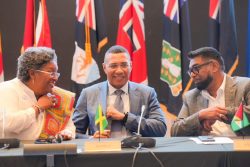Hundreds of caimans shipped from Guyana were found dead the Nether-lands in two separate shipments over recent days that violated air transport regulations and breached international wildlife rules.
A December 12th statement on the website of the Dutch Food and Consumer Product Safety Authority (NVWA) said that a November 29, 2013 a shipment for a dealer in the Netherlands resulted in the deaths of over 320 caimans. The NVMA statement said that the caimans were transported in crates that didn’t have enough ventilation holes. In some cases there were 50 caimans in one container when there are only supposed to be three. There was a total of 444 caimans in the shipment.
The NVMA said that on December 12th, 2013 another shipment of 200 caimans and three snakes, this time destined for the Ukraine was intercepted. The statement said that the animals were not packed in accordance with international aviation rules and 48 of the animals did not survive and others were likely to die.
The animals have been moved to a storage area. The NVWA said that a report will be issued against the airline in relation to animal torture and violation of International Air Transport Aviation (IATA) rules as it relates to the transport of live animals. Further, in relation to the second shipment a report will be made of the breach of the Convention on the International Trade of Endangered Species of Flora and Fauna (CITES) as there was no valid permit.
Management of the wildlife trade here comes under the Ministry of Natural Resources and the Environment. A statement from its Guyana Wildlife Management Authority (WMA) Wildlife Division yesterday acknowledged the two shipments but made no mention of the numbers of deaths of caimans referring only to “several” from one shipment.
The wildlife authority statement then proceeded to set out some of the regulations governing the transport of live animals. From these, the wildlife authority said it is clear that while some parameters are established for the shipment of live animals, “there is ambiguity in the guidelines which can lead to subjectivity on the part of inspecting officers.” The Wildlife Management Authority said it will therefore undertake the following:
1. Training of the inspecting officers on the IATA Live Animal Regula-tions.
2. Development of clearer guidelines by the WMA within the parameters laid out by the IATA Live Animal Regulations to avoid accusations of subjectivity on the part of inspecting officers.
The wildlife trade has in the past had questions raised about the conditions under which animals have been shipped. There have been other instances where animals were found dead and shipments seized. The violations of IATA rules and the absence of a permit for one of the shipments could attract scrutiny of the local trade from the CITES secretariat. In the 1990’s Guyana’s wildlife trade had to be suspended because of numerous problems as it relates to capturing, shipping, paperwork and corruption. In subsequent years other problems have surfaced periodically.








